Marstallstr. 46
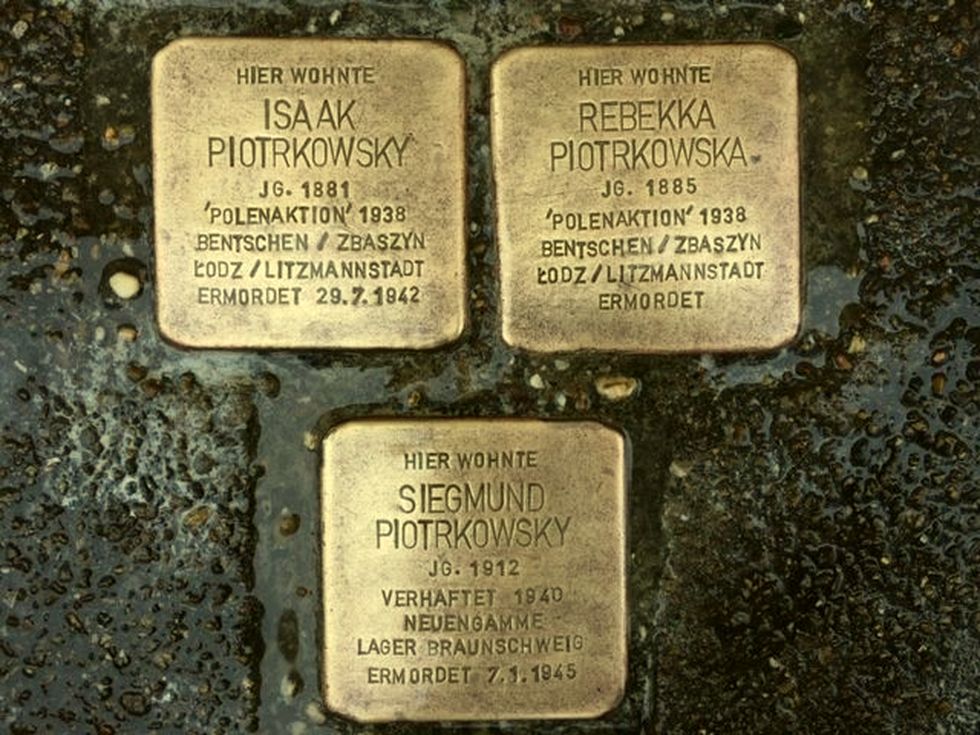
„My name is Frieda Piotrkowska. I was born in Göppingen/Württemberg and lived there with my parents, sisters and brother. Till our expulsion in 1938 we all had jobs, with exception of my mother – who worked as housewife. My parents emigrated at a very young age from Poland to Germany and settled in Göppingen. Everything was peaceful till the Nazis took over the government. Then the horrible persecution of Jews started which changed our lives overnight. We lived in permanent fear and daily threats to our lives. My brother was occupied as reporter and journalist at the Jewish newspaper „Die Rundschau” in Stuttgart in 1934. Especially because of this occupation he was persecuted by the Gestapo. He had to flee on the spot. He managed to cross the border into Poland – the only possible refuge. My father and my sisters and I myself were occupied until 1938. One day in September (actually on October 27; note by the author) we were torn out of sleep in the middle of the night by the Gestapo and taken to prison. There we spent the night as prisoners and the next morning we were transported to Stuttgart. Thousands of Polish Jews were concentrated there. Deported and taken to Poland by “Schub” (deportation). We had to leave everything behind, could only take with us the most necessary belongings. At the border between Poland and Germany in a small village named Zbaszyn (in German Altbentschen, note by author) thousands of us refugees were simply left to our fates. We had to spend three days and three nights in the open air without food, a terrible experience until help from the Jewish community out of Lodz came offering us to come to Lodz. In Lodz the majority of us were housed in a factory that had burned before. We lived in terrible misery. There was big unemployment and it was completely impossible to get any job at all. Not to speak of us being foreigners and without knowing the language. The Jewish community supplied us with food and in June 1939 the three sisters of us got a permission to go to England. Regretful we had to leave our parents and our brother behind. A second permission that we expected (for our brother and our parents, note by author) reached us too late. The war between Poland and Germany started and we were completely shut off from our relatives. We received some lines from the Red Cross for the last time and that was the last we heard from our brother and from our parents.
During World War II we read about the atrocities of the Nazis and all these terrible reports gave us little hope that our family was surviving. About the sad fate of our parents and brother we only know that most of the Lodz Jews had been assassinated in the gas chambers of Auschwitz. But we do not have any evidence. We only have the statement of a Herr Rosenthal, a friend of our family and survivor by chance of one of these concentration camps.”
This text, an affirmation in lieu of oath, was written by the former Göppingen citizen Frieda Piotrkowska on August 26, 1957 at her later residence in New York. The reason for this statement was a restitution proceeding. Even the date shows how long the survivors had to wait for a financial compensation. In Frieda Piotrkowska’s writing the fate of her family was stated. From today´s point of view some details can be added.
28 Years in Göppingen
Rebekka Piotrkowska , née Goldmann and Isaak Piotrkowsky came from Kuttna and Lodz (today Poland), respectively, and after their emigration to Germany, they first resided in Jülich, where their first child, Ella, was born in March 1908. In 1909 Bertha was born as their second daughter, but she must have died before October 1910, where remains unclear. Since October 1910 the family must have lived in Göppingen Göppingen, because in this month their daughter Frieda was born here. In Göppingen the family first lived at Geislingerstr.37. Isaak, who called himself ‘Joachim’ as he had in Jülich, found work as a factory worker. Already in January 1911 little Ella died, she was buried in the Jewish section of the Goeppingen cemetery.
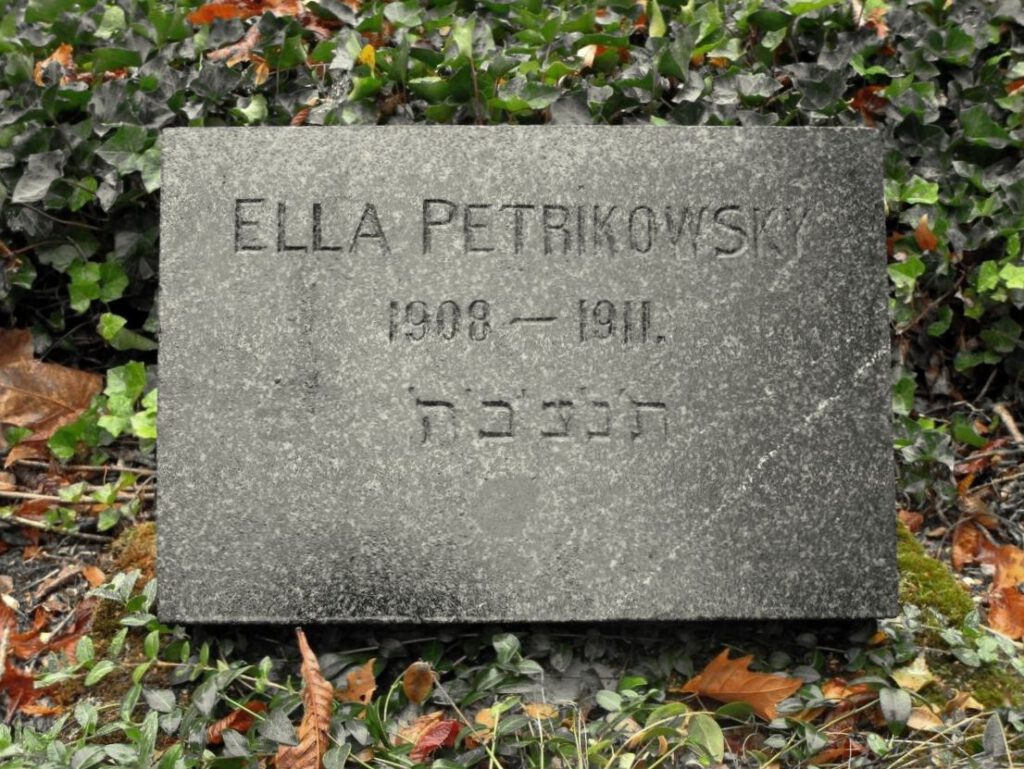
The couple’s other children were born in Göppingen: Frieda, born in 1910, Sigmund, born in 1912, Fanny, born in 1914, and Ella (second), born in 1916, who was given the name of her sister who had died five years earlier. According to the Göppingen address book of 1912, the family lived at Holzheimerstr.20, the entry reads: Petrikowski, Julius, Färber. Already at that time it becomes clear that the family was anxious about ‘integration’, they tried to ‘Germanize’ the Polish / Russian sounding family name But not only the family name: Isaak first gave his first name as ‘Joachim’, then as ‘Julius’ only to stick with ‘Joachim’. Later the family lived at Geislingerstr. 16. In the address book of 1924 the ‘Germanization’ seems to have been partially reversed: Piotrokowski, Joachim, Stanzer, Ulrichstr.3 are the new name and the new residential address. In the address book of 1927 the family name is then ‘Petrokowsky’. This remains in the address book of 1930, but the residential address changed to Marstallstr. 46. In the last address book with an entry of the family, namely that of 1934, one reads as a family name ‘Piotrkowski’. Whether the Nazi – city administration had ordered this renaming back – as it was the case in the family Zitter / Cyter, can only be assumed.
Isaak (Joachim) Piotrkowsky worked from February 1916 until his deportation in October 1938 as a semi-skilled press operator at the Göppingen toy factory Märklin. All the children of the family learned a trade. Frieda, the oldest daughter, was apprenticed as saleswoman with the firm Albert Schäfer Household Goods in Poststraße in Göppingen. Later she worked at the department store “Wohlwert” (Woolworth) as a saleswoman as well as a purchaser of household goods. Her sister Fanny was trained as a machine seamstress. When and where she worked is not known. Ella, the youngest of the sisters, probably had training as saleswoman too, although there is only record of a job in 1936 when she worked as a housekeeper in Stuttgart.
Sigmund Piotrkowsky was allowed after four years of Volksschule to attend the Realschule, where he completed his school career with two years at the commercial college. He completed his training in commercial business with the Göppingen company of Eugen Bernheimer and worked there until 1933 as an accountant. How and why he started to work at the “Jüdische Rundschau” (Jewish Review) in Stuttgart is not documented.
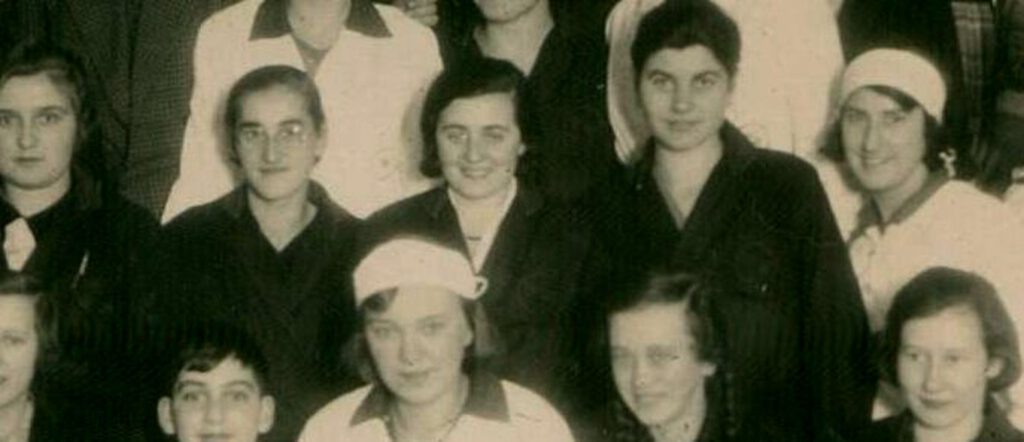
Many years the family lived in a three room apartment at the ground floor in Marstallstraße 46. The landlady and fellow occupant Katharina Käser underlined the good relation to her tenants in the restitution procedures, added the Swabian praise that Frau Piotrkowsky “always cleaned well”.
The Piotrkowsky family wanted to adapt to German majority society as much as possible. The change of the first name of the family father from ‘Isaak’ to ‘Julius’ and ‘Joachim’ as well as the ‘Germanization’ of their surname are an indication of this. Also, none of the children had learned to speak Polish. As far as bonds to the Jewish religion are concerned there are almost no hints. In Dr. Aron Tänzer’s book the family name is not mentioned, only a Bat Mizwa (Konfirmations) -Photo of daughter Ella in 1931/32 proves that the family still belonged to the Jewish community. Ella was the only one of the children who participated in 1929 in the Hanukkah celebration in Hotel Dettelbacher – as one of the four ‘dancing girls’ she completed the performances.
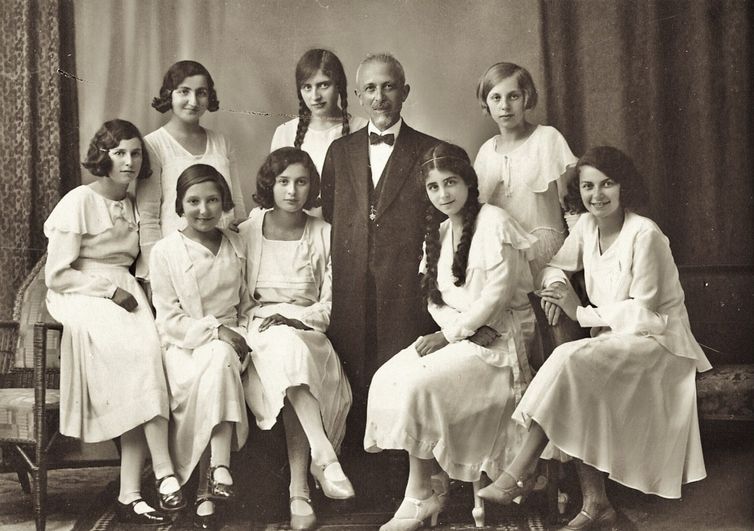
The Background of the Deportation – Further Deportees from Göppingen
On October 26, 1938 the ‘Reichsführer-SS’ and Chef der Deutschen Polizei, Heinrich Himmler decreed an immediate ban of residence for all those Jews of Polish origin in Germany who had been residents for more than five years and had been declared as “persons without nationality” in a further declaration just before.
While the Gestapo had instigated the deportation in lieu of the Foreign Office and coordinated the single measures the actual proceedings were task of the Schutzpolizei. In the days to follow 18 000 so-called Ostjuden (Eastern Jews) against whom Nazi propaganda had worked for years, were arrested and taken to the Polish border. Besides the Piotrkowsky family also the young couple Cilly and Julius Cyter was deported from Göppingen to Poland. Julius Cyter’s memories are similar to those of Frieda Piotrkowska. He writes in September 1955: “During the night of October 27 to 28 1938 me and my wife were woken by the police in our apartment in Hauptstraße 11 in Göppingen and forced at gunpoint to go along. We were taken to the local prison. We were only allowed to take our identity documents. On the same day (October 28) at noon we were led under police supervision from the prison to the police station where we were given the deportation order of the Landrat in Göppingen dated on the same date. We had to confirm the reception on paper. We were taken in a joint transport with other arrested people to Stuttgart station and guarded by police in closed railroad cars deported to Bentschen (on the Polish border) where we were left to our fate. Cilly and Julius Cyter managed to flee from Poland to Argentina (Buenos Aires) in August 1939 and thus survived the Nazi times. Other members of the Göppingen Cyter /Zitter family who also were of Polish nationality said as being `stateless´, were not deported – something we cannot explain.”
Ghetto Litzmannstadt (Lodz)
The City of Lodz had developed into one of the leading industrial towns of Poland. Its population consisted of Poles, Germans and Polish Jews. With the establishment of the Polish state after World War I a certain Polonisation was taking place. This is evident in Frieda Piotrkowskas report when she points to the problem of deficiencies with the Polish language. After the town was occupied by Nazi German’s Wehrmacht (the Nazi German armed forces) living conditions of the Jewish population became dramatically worse. The town became part of the Deutsche Reich, the Warthegau, and in April 1940 named as Litzmannstadt. In the same month the walls and fences around the Jewish Ghetto were closed, the ghetto the Nazis had established in some parts of the town. The none-Jewish population had been driven out of this area. 164 000 Jews had to share 4 800 rooms. The area of only 4 square kilometers was partly established in those quarters of the town where the infrastructure was worst. To the Jews who had originally lived in Lodz another 40 000 people from Central and Western Europe were dragged into the ghetto: Jews but also Sinti and Roma. Right from the start living conditions were inhuman, the people suffered from malnutrition, died in masses from diseases and many froze to death in winter. Between 1940 and 1944 over 43 000 people died in the ghetto. Additional to daily misery they were forced to do labor for the Germans. 70 000 labor slaves were exploited. One of the well-known companies who profited was the company of Josef Neckarmann (`Neckarmann´ was named a German company that was a major business in mail order and travel agency after the war in Western Germany, the translator). Very probably Rebecca, Isaac and Sigmund Piotrkowsky had to do forced labor too. On their last postcard of June 4th 1940 to the family members who had escaped this of course could not be mentioned.
“Parents, Zygmunt in good health. Write to Max, Heinrich and Ilse. Bleibt gesund (stay healthy). Please answer in time. Parents and Zygmunt.”
Possibly with “Heinrich and Ilse” the couple Ilse and Heinrich Frankfurter out of Göppingen is meant who had already immigrated to Palestine in September 1938 at a time when the Piotrkowsky family still lived in Göppingen. It could well be that Isaak and Rebekka hoped to get to Palestine as well. But any help was too late. Isaak died at the age of 61 from the murderous living conditions in the ghetto on July 29th 1942, Rebekka’s date of death is not known. It can be assumed that she was deported to one of the extermination camps Kulmhof/Chelmo or Auschwitz and assassinated like ten thousands of other Jews, Sinti and Roma who were transported from Ghetto Litzmannstadt.
Sigmund’s Death in Braunschweig
In 1944 when the advance of the Soviet Army was obvious the Nazis started to dissolve Ghetto Litzmannstadt. The ghetto dwellers that were completely exhausted by forced labor – as well as the children and the old – were assassinated in the extermination camps. Younger ones still capable of working hard were transferred to other camps. Among these was Sigmund Piotrkowsky who had to leave the ghetto on March 15th 1944 “to an unknown destination”. Where Sigmund stayed in the months to come could not be traced. However in 1944 he was registered as forced laborer in Braunschweig. From August 17th, 1944 five barracks were erected in Würthstraße (now Schillstraße) Braunschweig in which forced laborers from Büssing NAG were stationed, a camp attributed to KZ Neuengamme. Some 800 forced laborers had to produce Büssing trucks for the Wehrmacht. Besides French prisoners the majority were Polish Jews who came from Ghetto Litzmannstadt and in KZ Auschwitz had been `selected´ by Büssing representatives for their task in Braunschweig. Thus it is likely that Sigmund Piotrkowsky had suffered some months in KZ Auschwitz. But conditions in the Braunschweig camp were lethal as well: Until the end of 1944 about 300 prisoners died of hunger, diseases and maltreatment.
How Sigmund Piotrkowsky did experienced the last months of his life? We only know that he died on January 7th 1945 in the Braunschweig camp at the age of 31. As reason for his death the Standesamt (Registry) Braunschweig stated “Edemas and cardiac insufficiency”. A murder in instalments, only a couple of week’s liberation to come.
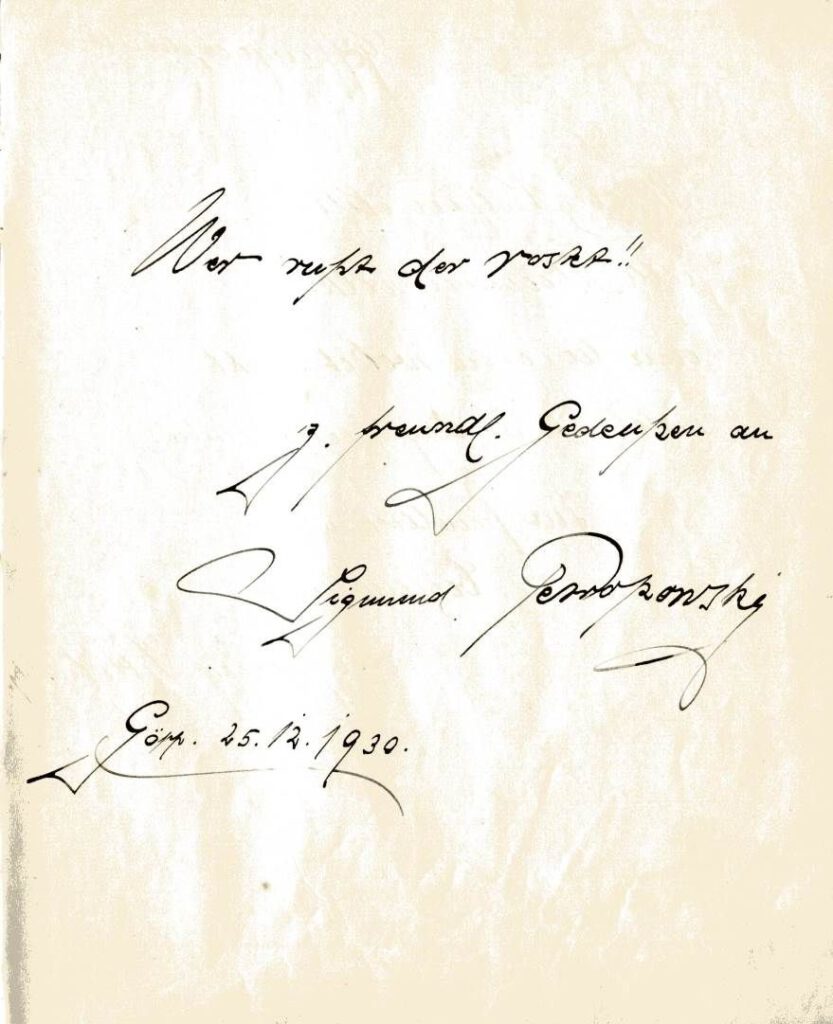

The Life of the Sisters in the USA
Have Frieda, Ella and Fanny Piotrkowsky got to know when their father and their brother had been murdered? In the restitution papers which date as far as 1971 there is no according hint. All of the three sisters had immigrated from England / Scotland to the USA and received American citizenship. There is a somehow complete view of their living conditions in 1957:
Frieda who got into the USA in March 1948 lived in the Bronx NY and worked as a sales business woman. She stayed single.
Her sister Fanny lived at the same place in the Bronx. She married Eisenberg, stayed at home as a housewife, but had no children. She changed her first name into “Fay”.
Their youngest sister Ella married too lived as Ella Rosenthal in Worcester, Massachusetts. She was the only one of the sisters to give birth. Unfortunately, we did not manage to trace the daughter or son of Ella Rosenthal.
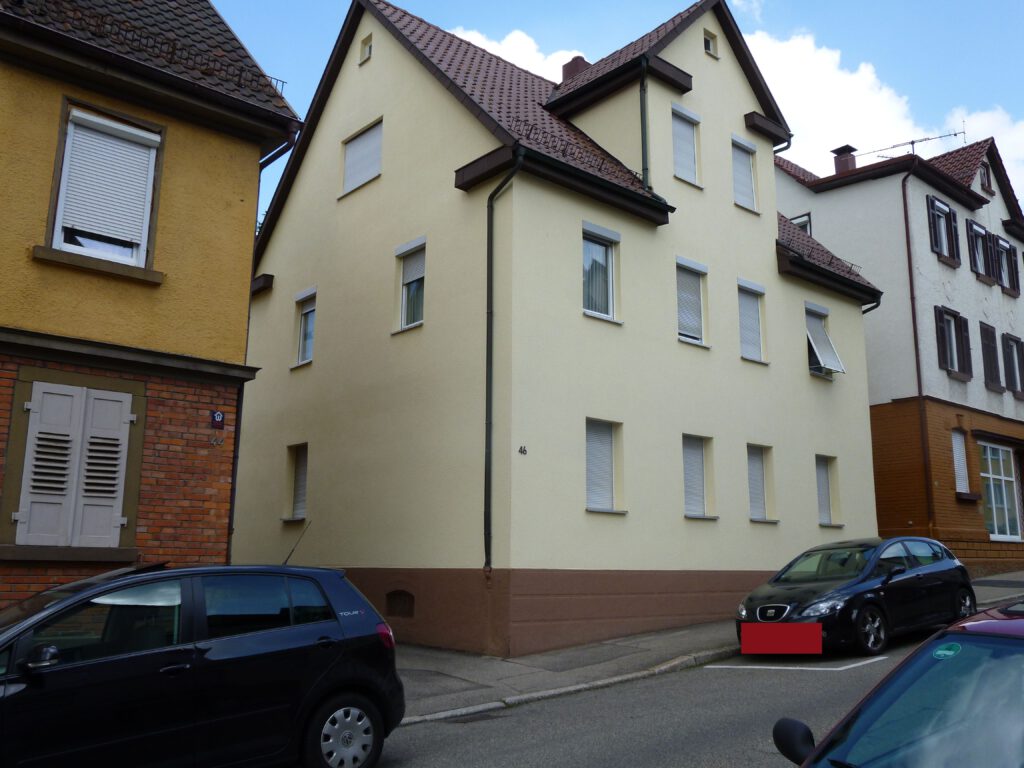
On May 16th, 2014 Gunter Demnig set three Stumbling Blocks in front of the house Marstallstraße 46 where the Piotrkowsky family had lived for many years. Scholars of the Uhland Realschule framed the ceremony.
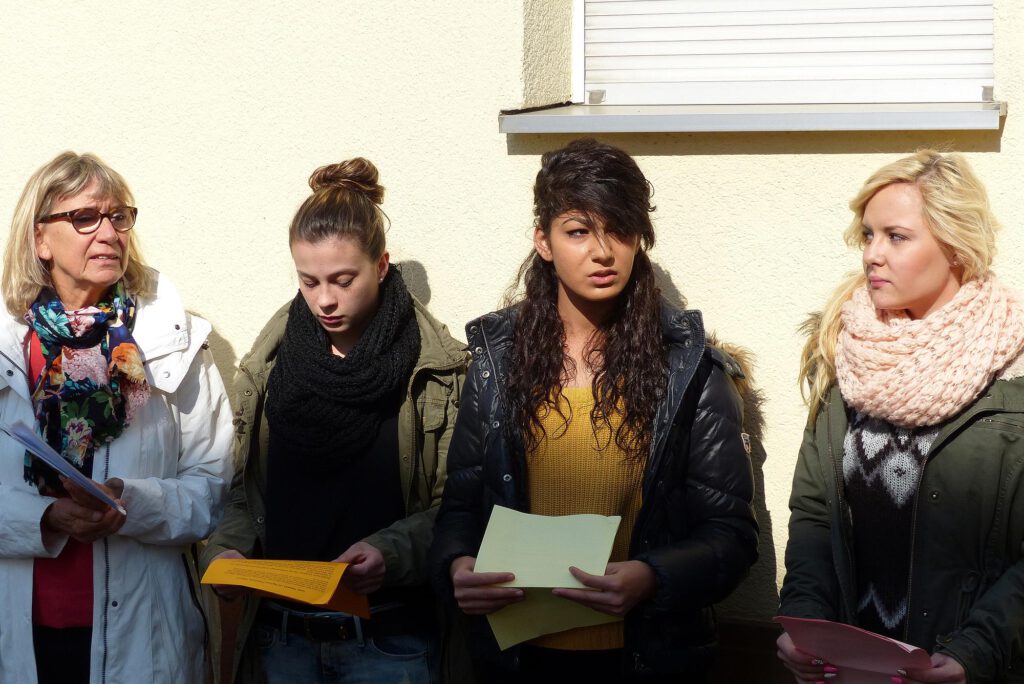
(09/09/2019 kmr/ir)


Leave a Reply